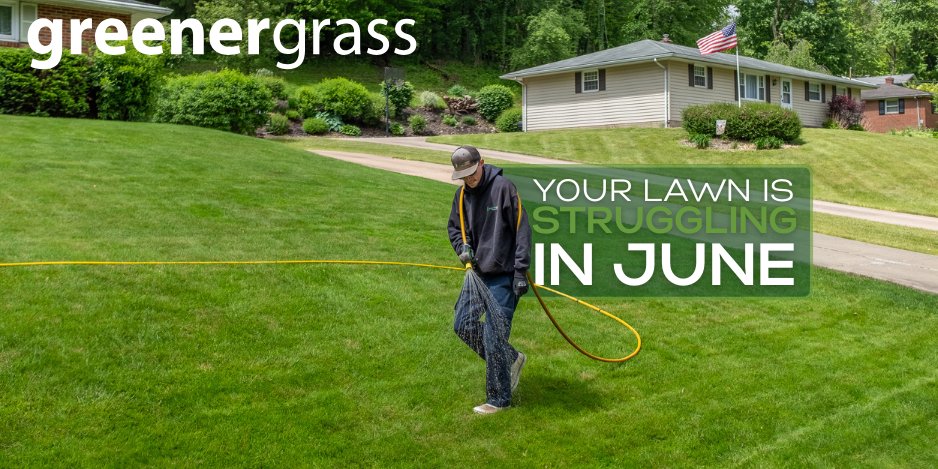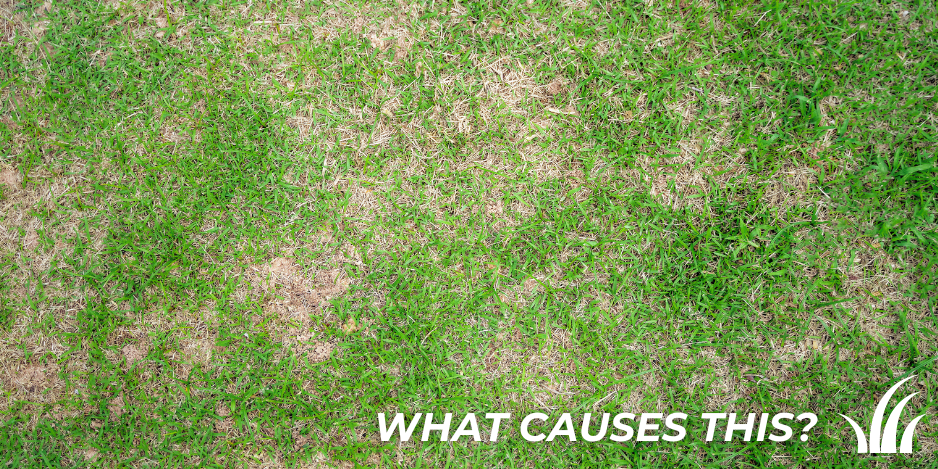Why Your Lawn Starts Struggling in June (and How to Fix It)
If your lawn looked lush and green in May but now feels patchy, pale, or tired—you’re not alone. June is when many Northeast Ohio lawns start showing signs of stress, even if they were thriving just a few weeks ago.
That’s because the weather changes fast in early summer, and your soil, grass, and root systems all feel the shift—especially if spring lawn care didn’t set a solid foundation.
At Greener Grass Organic Lawn & Pest, we work with thousands of homeowners across Northeast Ohio, and we see the same thing every year: June is a turning point. Here’s what’s happening—and more importantly, how you can fix it.

Why Lawns Struggle in June (Top Causes)
1. Heat & Sun Stress
Spring in Northeast Ohio brings consistent rainfall, cooler temps, and happy grass. But when June rolls around, those cool days give way to bright sun, rising heat, and dry spells—and your lawn has to keep up.
If your lawn has shallow roots or poor soil structure, it can’t reach deep water reserves. That leads to dry, crispy turf—especially in full-sun areas.
2. Shallow Root Systems
If your lawn was overwatered in the spring (common during rainy seasons or heavy irrigation), the roots didn’t need to grow deep. Now that the surface layer is drying out, that shallow root system isn’t cutting it.
Shallow roots = thirsty grass = visible stress.
3. Low Nutrient Reserves
By June, most lawns have burned through the nutrients from spring fertilization—especially if you used a DIY or generic product. Without proper nutrient support, growth slows, color fades, and turf density declines.
A weak lawn invites weeds, thins out faster, and struggles to handle heat, foot traffic, or pests.
4. Weed Pressure
Early summer is prime time for aggressive weeds like:
-
Clover
-
Crabgrass
-
Oxalis
-
Nutsedge
-
Spurge
These weeds thrive in warm temps and compete with grass for nutrients, water, and space. If your lawn is even slightly thin or stressed, weeds will move in fast—and they don’t leave quietly.
5. Compacted Soil
Spring rain + mowing + foot traffic = compacted soil. When soil is compressed, roots can’t grow properly, nutrients get locked out, and water pools on the surface instead of soaking in.
This makes your lawn more vulnerable to heat stress, pests, and fungus—especially in high-use areas like backyards, play zones, and around walkways.

🚩 Signs Your Lawn Is Under Stress
Not sure if your lawn’s in trouble? Here are a few red flags:
-
Grass that looks pale or yellow even after rain
-
Dry patches that don’t bounce back after watering
-
Thin areas where weeds are thriving
-
Crunchy texture when walking barefoot
-
Mowing leaves the lawn looking “scalped” instead of fresh
These are signs your lawn isn’t just thirsty—it’s struggling at the root level.

How to Fix It (The Greener Grass Way)
We don’t do quick fixes or chemical band-aids. We treat the cause, not just the symptoms.
✔️ Organic Fertilization for Summer Conditions
We use slow-release organic fertilizers designed specifically for the demands of early summer in Ohio—feeding the lawn steadily without shocking the soil or burning stressed grass.
This keeps your turf green, thick, and actively growing even through June and July.
✔️ Aeration to Relieve Compacted Soil
If we find compaction (and we often do by June), we recommend core aeration to break things up and get oxygen, nutrients, and water moving where they’re needed most: deep into the root zone.
✔️ Smart, Targeted Weed Control
Forget the DIY sprays that either don’t work or torch your grass. We use selective, pet-safe treatments that target invasive weeds like clover and oxalis without harming your turf—or your pets.
✔️ Soil Health Comes First
Our entire approach revolves around building long-term lawn health. Healthy soil = stronger roots = fewer weeds, better drought tolerance, and greener grass—naturally.

What NOT to Do This Month
Even well-meaning homeowners make these common mistakes in June:
-
❌ Don’t apply high-nitrogen fertilizer: You’ll get a fast green-up followed by faster burnout. It also feeds weeds.
-
❌ Don’t mow too short: Cutting below 3-1/2 inches weakens your lawn and exposes soil to heat stress.
-
❌ Don’t water in the middle of the day: You’ll lose most of it to evaporation. Water early in the morning (6–9 AM) for best absorption.

Get Pricing and Get on Our Schedule
We’ve seen it all, and we know exactly what it takes to create the perfect lawn. The final step to a greener, healthier yard starts with us. Did you know you can get your pricing in just minutes? Start HERE and find out! No waiting, no hassle—just a straightforward way to get started. Lock in your spot today and set your lawn up for success this season!
Still wanting to learn more? You Can Read More HERE
